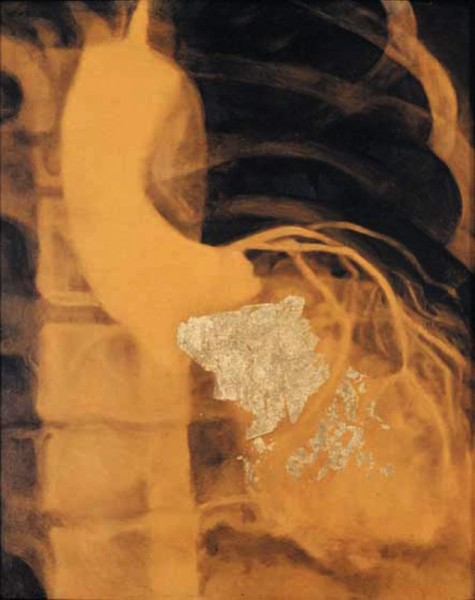Archives – Fall 2007
 TATIANA GARMENDIA, Figure 2055, Oil and gold leaf on canvas, 20 x 16 inches, 2000–2002.
TATIANA GARMENDIA, Figure 2055, Oil and gold leaf on canvas, 20 x 16 inches, 2000–2002.
Figure 2055
The invention of the X-ray in 1895 along with the identification of various radioactive emissions had an effect on artists’ perception of matter, energy, and anatomy and thus challenged ideas of representation, especially of that which is invisible to the human eye. What’s more, the distinction between science and spiritualism was not as clearly drawn in the late 1800s and early 1900s as it is today.
This contemporary painting by Cuban-American artist Tatiana Garmendia pays tribute to this early influence of technology on visual culture. Born into a family of doctors and currently living and working in Seattle, Washington, Garmendia was raised a devotee of Santeria—a mix of Yoruba mysticism and Spanish Catholicism. She describes growing up in a household where the human body, in various disguises of dejection and exaltation, was a primary theme in devotional and medical imagery. As an artist, her exploration of the human form is based on remembered experiences, juxtaposing scientific certainty against invisible realms, both mystical and physical. Figure 2055 conjures an X-ray-like image of the human skeleton. The familiar image of an X-ray is challenged, however, by bright color and a layer of gold leaf, allusions to the rituals and artifacts of her childhood religion.
